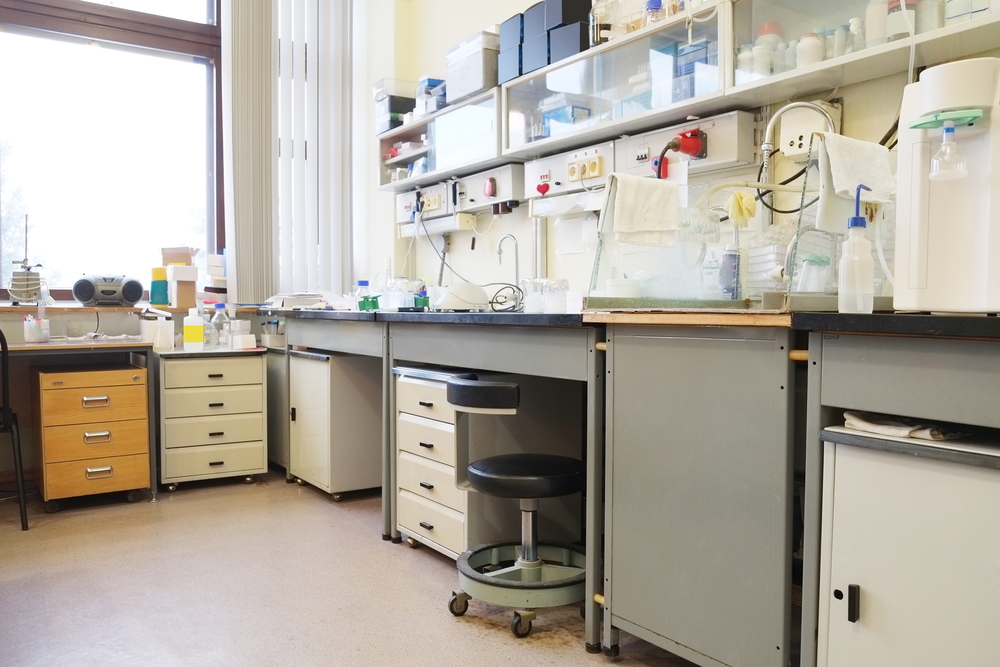Originally published on March 11, 2020, this post has been updated for relevancy and accuracy.
Disposing of or moving scientific lab equipment is not nearly as simple as many may think. Of course, the natural assumption would be to transport and dispose of equipment as we would anything. However, dismantling and discarding lab equipment requires a very specific technical process.
When it’s time to dismantle, remove or discard your equipment, this process is known within scientific industries as “decommissioning.” Unfortunately, our assumptions about the simplicity of each task would be wildly incorrect. In order to accomplish any of these legally and safely, you need to decommission the equipment. And the only way to ensure exemplary decommission is with a reliable, professional provider of decommission services. Basically, we make sure that lab equipment receives official, effective and trustworthy decommissioning techniques. In this post, we’ll evaluate the three steps to a successful decommissioning.
1. Audit Your Lab
In order to develop a successful plan, it’s imperative to audit. Basically, this means assembling a finite list of each piece of equipment or substance within your lab. Decommissioning requires a total, unquestionable inventory of all chemicals and machinery in the facility. Even if something seems trivial or inconsequential, document it.
In addition to cataloguing, make sure you dispose of anything that’s unnecessary. If you eliminate these items early on, it will save you time and money down the road. Of course, if it’s an item that needs decommissioning, you can’t dispose of it yourself. However, if it’s something that’s an obvious waste of space and not worth keeping, throw it away.
Once you’ve done this, then assign everything that you’re keeping with a specific destination. Obviously, this step is applicable if you’re moving to a different facility, as many businesses do. Essentially, the more you prepare for decommissioning in advance, the smoother the process will be.
2. Decontamination of the Lab Equipment
For any lab, decontamination is essential to both industry and government regulations, and of course: employee safety. Often, labs work with toxic or abrasive chemicals. Obviously, these chemicals are very dangerous and should never be handled recklessly. Without a doubt, any labs that handle hazardous specimens, chemicals or keep them in storage need decontamination. At SEPS, we specialize in lab equipment decontamination and can execute each step of the process quickly, safely and effectively.
A critical aspect in the decommissioning process is to establish precisely what requires decontamination. Obviously, the more thorough you can be, the better. Pay special attention to areas like:
- Biosafety cabinets
- Waste storage areas
- Floors
- Certain fan and filter units
- Walls
- Laminar flow hoods
- Wastewater systems
Also, when it comes to what requires decontamination, use your better judgement. Usually, it’s not difficult to determine the items and equipment that apply. Therefore, you should trust your instincts and decontaminate anything you might find questionable.
3. Documentation
After the decontamination, the next crucial step is proper documentation. When it comes to lab equipment, you can never, ever be too thorough. Basically, this applies to just about every procedure in every lab, not just decommissioning. A good rule of thumb when documenting is to double-check and verify there’s nothing left to the imagination. If there are any questions or uncertainty, the unofficial policy is that, basically, there’s more documenting to do.
Your documents should include precisely what was done to the equipment, and how it can be done again in the future. Take note of any potential future hazards, what chemicals have come in contact with the equipment, risk levels, and before-and-after photos.
Following These Steps…
While these are the three steps you can follow to accelerate the process, you’re not quite done yet. When it comes to decommissioning, these are definitely helpful and will contribute to your overall success. However, they are not the complete procedure. In order to oversee a successful decommission, you should always consult a professional decommissioning service.
Unfortunately, decommissioning is too risky and complex a process for even the most experienced lab administrator to complete independently. Maintaining your equipment and auditing, decontaminating and documenting will help to consolidate the process. At SEPS, we have a team of expert technicians that can complete the decommissioning process for you. Regardless of size, risk, or chemical hazards, we can decommission anything in your lab that needs it.
Conclusion
At SEPS, our expertise extends to just about every variable of lab management and equipment maintenance. Decommissioning is one of the many ways in which we can assist your lab, with a focus on convenience and limited work disruption. Our numerous accreditations and affiliations are a testament to our incomparable experience, knowledge and quality of service.
Sometimes, a lab has to pack up and move their equipment. Most of the time, it’s from relocating, renovating, or shutting down. Unlike most other businesses, this procedure is especially complex for any scientific, medical or pharmaceutical enterprise. Whether it’s decontamination or cleanroom repairs, we aim to make each lab’s job easier by handling the complexities for you.
